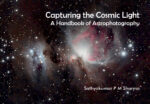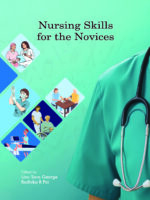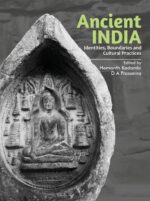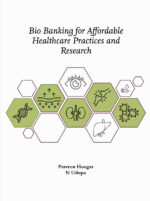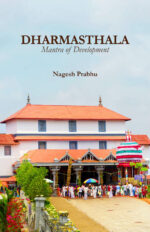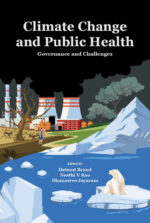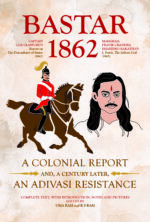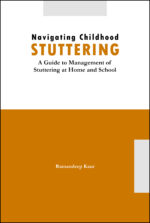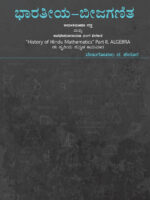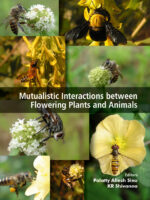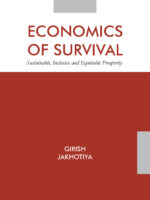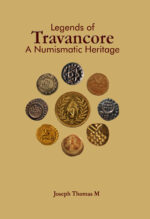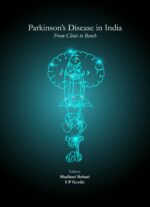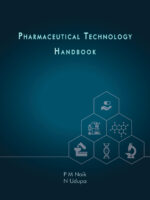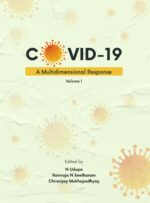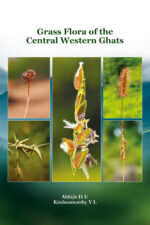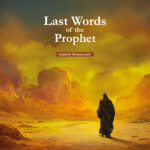-
Capturing the Cosmic Light – A Handbook of Astrophotography
₹670.00Author: Sathyakumar P M Sharma
The Handbook of Astrophotography is the first book dedicated to Astronomical Imaging through modest equipment, and the first to be published in India. It is a chronicle of the techniques learnt and employed by the author and is by no means proprietary. It is assumed that the reader is equipped with the basic knowledge to use a digital camera. After showing the many methods to capture the Cosmos, the book shows how to process these images. It is designed to be a handbook and not a user manual. The author hopes that the reader will be confident in astronomical imaging and develop his/her own techniques after reading the book. Sathyakumar started Astrophotography in January 2006 with a homemade wooden star-tracking mount and a camera borrowed from a friend. He later used his homemade Newtonian reflector telescope and an inexpensive digital camera to capture photos of the Moon. With an MSc in Aerospace engineering from the University of Salford, Manchester, he joined Opticstar Ltd, as a design engineer. There he was trained on the latest of astronomical instruments available for the amateur astrophotographer and eventually purchased the Celestron C8 Schmidt cassegrain telescope and the CG-5 Equatorial mount. Currently, he uses a GSO 6 inch RC telescope and an HEQ5-PRO computerized mount as well as an Orion 80ED Apochromatic telescope for astrophotography. He also owns an Astrotrac to take wide field vistas of the Cosmos. He is now employed as a Scientific Officer at Karnataka Science and Technology Promotion Society, Department of Science and Technology, Govt. of Karnataka.
Interested readers may write to us at mup@manipal.edu about purchasing the book.
-
Nursing Skills for the Novices
₹750.00Editors:
Nursing Skills for Novices is an essential resource designed specifically for undergraduate nursing students entering clinical practice. This manual outlines the key roles and responsibilities required to deliver high-quality patient care. With a focus on fundamental nursing procedures, it integrates the latest evidence-based practices and includes updated guidelines, tailored to the Indian healthcare setting.
One of the standout features of this manual is the inclusion of checklists for each procedure, enabling students and faculty to assess the efficacy of basic nursing skills. The reader-friendly format ensures ease of use, making it an invaluable tool for both learning and teaching.
Key features include objectives and relevance for each skill, pre-reading for procedures, and procedural checklists. This first edition simplifies the challenges faced by novice nurses, making it a useful resource for students and teachers. Nursing Skills for Novices is a vital tool for building nursing competencies in today’s clinical environments.Interested readers may write to us at mup@manipal.edu about purchasing the book.
-
Pharmaceutical Consumer Complaints: A Guide to Academia and Pharmaceutical Industry
₹795.00Editors: Girish Pai Kulyadi, Muddukrishna B S, Richa Ajay Dayaramani
This book is an excellent guide in analyzing consumer complaints and will aid the students who are yet to gain industry experience. It is necessary for resolving consumer complaints in pharmaceutical industry where such concerns are frequently received. The case studies provide a vivid description of defects that will help identify the nature of the issue, possible root cause of such complaints, and subsequent remediation.
Interested readers may write to us at mup@manipal.edu about purchasing the book.
-
SuperHeavy Elements
₹800.00Authors: Gottfried Münzenberg
Today, we live in a time when natural elements, even the ones which are not found in Nature can be made artificially. Making chemical elements: a dream of mankind has come true. SuperHeavy Elements (SHE), much heavier than those in Nature, have recently been created and is the subject of this book. The author, an insider of SHE research, led the German group which discovered the first series of SHE created by cold fusion. The book takes you through the journey of discovering a new element and the historical development of the field. Besides picturing the author?s personal experiences, the book addresses the physics of the creation of the chemical elements in the universe and the artificial synthesis of SHE in the laboratory. This book is written for a broad readership to allow the readers to participate in the fascination and excitement of discovering a new SHE. The book is also educational as it includes basic physics and new developments of SHE research, besides the historical aspects of it. For those readers who are interested in more details of SHE research, a bibliography including popular scientific articles as well as original papers are introduced in the book.
Interested readers may write to us at mup@manipal.edu about purchasing the book.
-
Ancient India: Identities, Boundaries and Cultural Practices
₹800.00Editors: D A Prasanna, Hemanth Kadambi
The book comprises of papers which reflect on the multiple strands of scholarship on ancient India and also explores alternate perspectives for understanding India’s past. Both textual and archaeological sources are used in framing the book, and the themes include connected histories, identities, and cultural practices, which make the book an interesting read. It is a beginning to revitalize India’s diverse and profound past with a new-found rigour to inform the reader the incredible diversity and richness of the historical construction of the past.
Interested readers may write to us at mup@manipal.edu about purchasing the book.
-
The Practice of Geopolitics
₹850.00Author: M D Nalapat
Intended to be a Practioner’s Guide to Geopolitics, the book provides a look into the thought processes that generate correct and timely analysis of global events. Geopolitics needs to weave within its analytical grasp economics, society, strategy and even culture, as the science deals with overall national capabilities as well as the mutal synergy and frictions between nations. Although a broad range of subjects has been covered in the book, each is anchored in the ground reality of events having a profound impact on the lives of citizens and on world events. The growing interconnectedness of the globe has resulted in a need to do away with the popular west centric models of international relations and to view events not through that single prism but from a holistic viewpoint that accepts the relevance and maturity of different histories and geographies. What the book provides is an alternative Weltanschauung to the dominant models of geopolitical analysis, so that the science is enabled to cross beyond the narrow boundaries which have confined. The scope and applicability of its analysis. The rise of Asia needs a geopolitical vision unique to the continent, and this is what has been provided by Professor Nalapat.
Interested readers may write to us at mup@manipal.edu about purchasing the book.
-
Bio Banking for Affordable Healthcare Practices and Research
₹850.00Editors: Praveen Hoogar, N Udupa
Bio Banking for Affordable Healthcare Practices and Research provides a holistic understanding of how bio banking is an essential component of crucial treatments. This extends to understanding bio banking processes in a post-accident period as well, where shortage of bio elements such as blood, skin, eye, bone, platelets, kidney, liver, or any genetic components during treatment might cause a serious issue. The book explains how bio banking extends a helping hand in crucial situations where a small negligence might cost a life or lifetime injury.
Interested overseas customers may write to us at mup@manipal.edu about purchasing the book.
-
Dharmasthala: Mantra of Development
₹850.00Author: Nagesh Prabhu
This book is an in-depth examination of the transformation of Dharmasthala under the leadership of D Veerendra Heggade, Padma Vibhushan awardee. It depicts the centuries-old tradition of Dharmasthala and its significance as an abode of faith wedded to charity without any barriers. It focuses on Heggade’s leadership and ideas since his elevation as the Dharmadhikari in 1968, underscoring his belief that true empowerment involves addressing physical, mental and spiritual needs of individuals rather than simply providing material support. The book dwells on Heggade’s vision and strategies to transform the pilgrimage centre into a hub for social service and the factors behind its widespread influence and reach in India and abroad. It brings out the various facets of the institutions headed by him and seeks to understand what makes them special and effective in its mission. It is an attempt to understand whether it is the enlightened leadership, personal involvement, inclusive approach, compassion or a combination of all these factors that has contributed to the evolution of the developmental model of Dharmasthala, which is portrayed as a ‘mini state’ within Karnataka.
Interested readers may write to us at mup@manipal.edu about purchasing the book.
-
Climate Change and Public Health: Governance and Challenges
₹850.00Editors: Helmut Brand, Neethi V Rao, Dhanasree Jayaram
Climate Change and Public Health: Governance and Challenges aims to provide a comprehensive overview of various ways in which climate change and public health are interlinked. It touches upon a range of issues such as the impacts of climate change on health, the impacts of the health sector on climate change, intersections between health and climate policies, and the geopolitics of climate change and health. The book delves into specific topics such as air pollution, heat health, climate finance, and water security, among other relevant issues concerning the broader theme of the book. One of the objectives of the book is to explore different approaches and methodologies involving studying the interlinkages between climate change and health, including assessing the health impacts of climate change and designing policies to address climate and health governance. It covers both global and Indian contexts, thereby providing diverse perspectives on climate change and public health, and striving to explore effective and inclusive ways of tackling this major challenge.
Interested customers may write to us at mup@manipal.edu about purchasing the book.
-
Bastar, 1862
₹850.00In the summers of 1861 and 1862, Captain CLR Glasfurd, a British India bureaucrat, toured Bastar on horseback. His Report on the Dependency of Bastar, originally an official tour document, offers a glimpse into the Gond-inhabited region of Dandakaranya, north of the Godavari River, mentioned in the Ramayana. Glasfurd’s account sheds light on the early days of British India, the empire’s expansion into India’s hinterlands, and the complexities of imperialism. It also explores the rise of commerce-centric ‘development,’ presenting both its positive and negative aspects.
A century later, in the same land Glasfurd once surveyed, a very different story unfolded.
I, Pravir, the Adivasi God is the personal account of Pravir Chandra Bhanjdeo Kakatiya, the last Maharajah of Bastar, deeply revered by his people and remembered across India for his tragic end at the handsof the State in 1966. Crowned at the age of seven after the sudden death of his mother, Pravir was raised under the care of English governesses and, as a teenager, signed the Deed of Accession merging the State of Bastar into the Indian Union. Initially idealistic, he soon found himself alienated in the new republic, his idealism shattered by betrayal. Officially declared insane, though later proven sane, Pravir was stripped of his title, impoverished, and assassinated in 1966, before he turned forty. This is his story, in his own words.
Interested readers may write to us at mup@manipal.edu about purchasing the book.
-
Navigating Childhood Stuttering: A Guide to Management of Stuttering at Home and School
₹850.00Author: Ramandeep Kaur
Navigating Childhood Stuttering: A Guide to Managing Stuttering at Home and School is an essential resource for parents, teachers, caregivers, and therapists supporting children who stutter. While stuttering is a lifelong condition, it can be effectively managed with the right understanding, strategies, and consistent support. Relapses are common, particularly when children face high-pressure situations, experience low self-esteem, or fail to consistently apply fluency techniques. Environmental factors such as academic stress, peer teasing, and rapid changes in routine can also exacerbate disfluencies.
This guide provides parents, teachers, and therapists with tools to understand the complexities of stuttering and create supportive environments. It includes chapters on the basics of fluent speech, identifying relapse triggers, and integrating speech strategies into daily routines.
Using evidence-based techniques and practical exercises, the book emphasizes that stuttering does not limit a child’s potential. It also highlights the importance of fostering an environment where children feel confident and understood. The book offers actionable steps to help children build self-esteem, improve communication skills, and thrive socially and academically. It provides guidance on fostering confidence and inclusiveness, helping children feel understood and supported. By empowering families and educators with knowledge and strategies, the book aims to enhance the quality of life for children who stutter, ensuring they thrive in all areas of life.Interested readers may write to us at mup@manipal.edu about purchasing the book.
International Edition available on available on -
Bharatiya Bijaganita
₹895.00ಪ್ರಾಚೀನ ಭಾರತೀಯ-ಬೀಜಗಣಿತದಲ್ಲಿ ಅನಿರ್ಣೀತ ಸಮೀಕರಣಗಳ ಕುರಿತ ವಿಶ್ಲೇಷಣೆಯು (Indeterminate-analysis) ವಿಶೇಷ ಗಮನಾರ್ಹವಾದ ಸಂಗತಿಯಾಗಿದೆ. ಏಕಘಾತೀಯ ಅನಿರ್ಣೀತ ಸಮೀಕರಣಗಳ ಪರಿಹಾರಕ್ಕೆ ಸಂಬAಧಿಸಿದ ವಿಷಯದ ವಿಶ್ಲೇಷಣೆಯನ್ನು ಭಾರತೀಯ-ಬೀಜಗಣಿತಜ್ಞರು ‘ಕುಟ್ಟಕ’ ಎಂಬ ಪಾರಿಭಾಷಿಕ ಪದದಿಂದ ಸೂಚಿಸಿದರೆ, ಅನಿರ್ಣೀತ ವರ್ಗಸಮೀಕರಣಗಳ ವಿಶ್ಲೇಷಣೆಯನ್ನು ‘ವರ್ಗಪ್ರಕೃತಿ’ ಎಂದು ಕರೆದಿದ್ದಾರೆ. ಎರಡೂ ವಿಷಯಗಳನ್ನು ವಿಶದವಾಗಿ ಚರ್ಚಿಸಿದೆ. ಚಿಹ್ನೆಗಳ-ಬಳಕೆ, ಅವ್ಯಕ್ತಗಳನ್ನು ಸೂಚಿಸುವುದಕ್ಕಾಗಿ ಬಳಸುವ ಅಕ್ಷರಸಂಕೇತಗಳು, ಸಮೀಕರಣಗಳು ಬೀಜಗಣಿತಶಾಸ್ತçದ ಮೂಲಾಧಾರಗಳಾಗಿವೆ. ಅವ್ಯಕ್ತಗಳನ್ನು ಸೂಚಿಸುವುದಕ್ಕಾಗಿ ಶಿಸ್ತುಬದ್ಧವಾಗಿ ಅಕ್ಷರಸಂಕೇತಗಳನ್ನು ಪ್ರಪ್ರಥಮವಾಗಿ ಬಳಸಿದವರು ಭಾರತೀಯರು. ವಿವಿಧ ಬಗೆಯ ಸಮೀಕರಣಗಳನ್ನು ವಿಭಿನ್ನ-ವರ್ಗಗಳಲ್ಲಿ ವಿಂಗಡಿಸಿ, ಅವುಗಳ ವಿಸ್ತöÈತ ಅಧ್ಯಯನವನ್ನು ಪ್ರಪ್ರಥಮವಾಗಿ ಕೈಗೊಂಡವರೂ ಅವರೇ ಆಗಿದ್ದಾರೆ. ಹಾಗಾಗಿ, ಬೀಜಗಣಿತವನ್ನು ಶಾಸ್ತçದ-ಸ್ವರೂಪದಲ್ಲಿ ಹುಟ್ಟುಹಾಕಿ ಮುನ್ನಡಿಸಿದವರೂ ಅವರೇ ಎಂದು ಹೇಳಬಹುದಾಗಿದೆ. ಪ್ರಸ್ತುತ ಕೃತಿಯು ಬೀಜಗಣಿತದ ಸಮೀಕರಣಗಳನ್ನು ಬಿಡಿಸುವುದಕ್ಕೆ ಅವಶ್ಯವಾಗಿರುವ ಪ್ರಕ್ರಿಯೆಗಳನ್ನು ಅಥವಾ ಪರಿಕರ್ಮಗಳನ್ನು ಅರ್ಥಾತ್ “ಬೀಜೋಪಯೋಗಿ-ಗಣಿತ”ವನ್ನು ಮತ್ತು ಬೀಜಗಣಿತೀಯ ಸಮೀಕರಣಗಳ ವಿಶ್ಲೇಷಣೆಯ ಕುರಿತು ಚರ್ಚೆ “ಬೀಜ” ಎರಡನ್ನೂ ಒಳಗೊಂಡಿದೆ. ಪ್ರಾಚೀನ ಆಚಾರ್ಯರು ನಿರೂಪಿಸಿರುವ ನಿಯಮಗಳಿಗೆ ಉಪಪತ್ತಿಯನ್ನು ಒದಗಿಸಿರುವುದು, ಮತ್ತು ಸ್ಪಷ್ಟೀಕರಣಕ್ಕಾಗಿ ಕೊಟ್ಟಿರುವ ಉದಾಹರಣೆ ಲೆಕ್ಕವನ್ನು ಆಯಾ ಗ್ರಂಥಕರ್ತನು ತಿಳಿಸಿರುವ ವಿಧಾನದನ್ವಯವೇ ಆಧುನಿಕ ಗಣಿತೀಯ-ಸಂಕೇತಗಳನ್ನು ಹಾಗೂ ಚಿಹ್ನೆಗಳನ್ನು ಬಳಸಿ ಪೂರ್ತಿಯಾಗಿ ಬಿಡಿಸಿ ತೋರಿಸಿರುವುದು ಈ ಕೃತಿಯ ವಿಶೇಷ ಮಹತ್ವದ ಸಂಗತಿಯಾಗಿವೆ. ಅಲ್ಲಲ್ಲಿ,
-
Mutualistic Interactions between Flowering Plants and Animals
₹950.00Editors: Palatty Allesh Sinu, KR Shivanna
The plant-animal interactions, both mutualistic and antagonistic, play a crucial role in the diversification of plants and animals, and are important in functioning of communities in their natural habitats. The mutual interactions between the flowering plants and the animals, in pollination and seed dispersal, largely determine the reproductive success of the flowering plants. Maintenance of these eco-services is critical for the sustainability of our biodiversity. India, with its rich biodiversity and leveling of crop yields in recent years would benefit from research in the area of plant-animal interactions. This volume includes chapters on various aspects of mutualistic plant-animal interactions. In particular the fundamental and applied aspects of ecoservices – pollination and seed dispersal are covered comprehensively. It also covers tritrophic interaction and the potential of genomics in studies on the plant-animal interactions. The book will be of interest to post-graduate students, teachers and researchers in the areas of Biology, Ecology, Botany,
Zoology, Agri-horticulture, Forestry, and Conservation Biology.Interested customers may write to us at mup@manipal.edu about purchasing the book.
Also available on

-
Economics of Survival: Sustainable, Inclusive and Equitable Prosperity
₹1,200.00Author: Girish P Jakhotiya
The last two decades have seen significant geopolitical and economic issues, like the global financial crisis, escalated tensions between Russia and Ukraine, a once-in-a-century pandemic, rising US-China tensions, and, most importantly, the weakening economies of rich countries. This book reflects on the ever-increasing inequality in our society and the possibilities of economic collapse, and argues for a different economic model. In a rapidly changing and uncertain world, this book highlights the importance of a macro-level approach in creating a global economy for the sustainable use of scarce resources.
This book identifies major gaps in the current global infrastructure, and goes on to propose a possible direction towards a peaceful and equitable coexistence. This book is an interesting read for scholars and students of geopolitics, economics, or international relations, and for the general reader interested in these fields.
Interested customers may write to us at mup@manipal.edu about purchasing the book.
Also available on

eBook available on

-
Legends of Travancore – A Numismatic Heritage
₹1,250.00The Kingdom of Travancore in the Southern part of India was a native state in British India which was well known for its progressive outlook. Its enlightened royalty ruled the country as Sree Padmanabha Dasa. They had in place a well oiled administrative mechanism that implemented various programs and reforms, resulting in an overall development of Travancore. Though Travancore was under the colonial rulers, there was a well-orchestrated administrative machinery for coinage. Coins were minted as per the specifications ordered by the periodically issued Royal Proclamations. It is creditable that Travancore retained its independence in its functioning to a large extent. This book is an insight into the coins of Modern Travancore (from 1729 AD) which not only reflects the religious beliefs of the rulers, but also sketches the socio-political atmosphere of the period. Dr Joseph Thomas hailing from Thiruvananthapuram, is a Professor of Urology at Manipal University in India. His passion for collecting coins developed into a serious numismatic pursuit. His special area of interest is the study of the history of Venad and Travancore. His detailed study of the Travancore coins and the various related issues give an insight into the rich numismatic heritage of modern Travancore. He is a Life Member of the Philatelic and Numismatic Association of Thiruvananthapuram and a Life Member of the South Indian Numismatic Society, Chennai.
Interested readers may write to us at mup@manipal.edu about purchasing the book.
-
Parkinson’s Disease in India: From Clinic to Bench
₹1,500.00Editors: Madhuri Behari, SP Gorthi
The book fills a void in the knowledge about difference in Parkinson’s disease as seen India, if any from the rest of the world. It will provide a reference for any student of neurology wanting to learn the finer nuances of Parkinson’s disease in India. The book is written by Indian authors who have studied different aspects of Parkinson’s disease in depth, covering all aspects of Parkinson’s disease. The book is painstakingly drafted to cover all aspects of Parkinson’s disease from demography, etiology, clinical features (both motor and non-motor), complications, treatment modalities, its impact on the sufferer and the family and the financial aspect.
Interested readers may write to us at mup@manipal.edu about purchasing the book.
-
Early Buddhist Artisans and their Architectural Vocabulary
₹1,600.00Author: S Settar
The early Buddhist architectural vocabulary, being the first of its kind, maintained its monopoly for about half a millennium, beginning from the third century BCE. To begin with, it was oral, not written. The Jain, Hindu, and other Indian sectarian builders later developed their vocabulary on this foundation, though not identically. An attempt is made here to understand this vocabulary and the artisans who first made use of it.
In the epigraphic ledger, the first reference to the mythical creator of the universe, the Visvakarma (Visakama), is made on the thupas at Sanchi and Kanaganahalli; the earliest excavators of cave temples, comprising five specialists – selavdhaki, nayikamisa, kadhicaka, mahakataka and mithaka – as well as a team of master-architects and supervisors, called the navakamis, appear at Kanheri. Besides these, there were also others called avesanis, atevasinas, acaryas, and upajjhayas all over the Buddhist world. The list does not end with these, because there were yet others called vadhakis (carpenters), seli-vadhakis (stonecutters), sela-rupakas (stone sculptors), mithakas (polishers), and so on. All these artisans who have recorded their life stories on the stone surface are identified, and their professional contributions evaluated here for the first time.
International Edition available on South Asia Edition available on -
Geopolitics of the 21st Century
₹1,900.00Author: M D Nalapat
The war in Ukraine has once again brought to the forefront the interconnectedness of countries to one another. Supply chains and markets have become global, and the need to ensure price and quality competitiveness on the part of manufacturers, service providers, and producers has meant increasing reliance among countries for sourcing items essential to their own economies. The consequence of such interdependence has resulted in the intersection of geopolitics with several aspects of our lives. Our societies are more closely connected than ever before. While there have been instances of peaceful coexistence, tensions within and between countries have multiplied and, at times, have erupted into open conflict. Understanding the ebb and flow of events within countries has become essential in comprehending global factors which affect our lives. This book provides an insight into significant dynamics of our time, and what they might lead us to.
Interested overseas customers may write to us at mup@manipal.edu about purchasing the book.
-
Pharmaceutical Technology Handbook
₹2,150.00The pharmaceutical industry is growing both in terms of volume and diversity of new products. As years pass by, new technology both for manufacture and quality control is being introduced. It is essential to maintain a competitive edge concerning quality, cost, compliance, and prompt deliveries. The fresh graduates are lacking knowledge about the ongoings of industry and there is a gap between academic education and industry expectations from pharma graduates. This comprehensive updated Pharmaceutical Technology Handbook helps in reducing the gap in understanding technology, modern pharma equipment, and plant design to some extent. Divided into six sections, the articles presented in this book, in one way or another, touch all aspects of succeeding in a competitive situation. The highlight of this book is its focus on the layout for various manufacturing sections, each prepared by expert architects/consultants. The authors are conversant with Good Manufacturing Practice (GMP) guidelines and have been instrumental in delivering manufacturing units of global standards approved by various approving agencies.
Interested customers may write to us at mup@manipal.edu about purchasing the book.
Also available on

-
COVID19: A Multidimensional Response
₹2,200.00Editors: N Udupa, Raviaraja NS, Chiranjay Mukhopadhya,
COVID-19 disease is caused by the SARS-CoV-2 virus, first detected in November-December 2019 in Wuhan, China. Thus far, more than 7 million people have been infected with the novel coronavirus across the globe, and the count is increasing with every passing day. Even though it causes severe respiratory problems, the majority of patients show mild symptoms, and pathogenesis is under investigation. Although several drugs are being developed and many of them are undergoing clinical trials, currently there are no approved drugs/vaccines to cure this disease. Personal hygiene and social distancing are important means to prevent the spread of this disease. With the advancements in scientific research, humankind is hoping to find a potent drug/vaccine for this disease at the earliest. The health care professionals and scientific community are at their maximum in combating this viral infection. In this book, an attempt is made to compile various aspects of COVID-19 in a single platform, which include aetiology, epidemiology, its clinical manifestations, diagnosis, pathological, clinical and therapeutic facets, comorbidities, risk factors, and the essential precautionary measures. This book comprises around 29 chapters contributed by various experts from research and clinical backgrounds.
Interested readers may write to us at mup@manipal.edu about purchasing the book.

